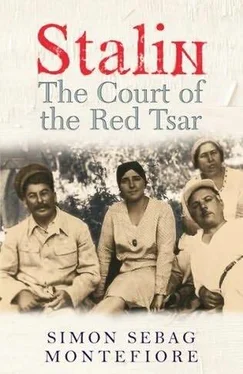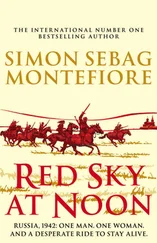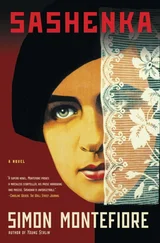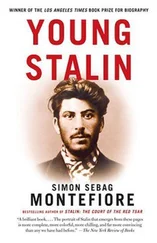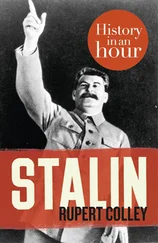* * *
That September 1931, Stalin and Nadya were visited by two Georgian potentates, one she loved, one she hated. The popular one was Nestor Lakoba, the Old Bolshevik leader of Abkhazia which he ruled like an independent fiefdom with unusual gentleness. He protected some of the local princes and resisted collectivization, claiming there were no Abkhazian kulaks. When the Georgian Party appealed to Moscow, Stalin and Sergo supported Lakoba. Slim and dapper, with twinkling eyes, black hair brushed back, and a hearing aid because he was partially deaf, this player strolled the streets and cafés of his little realm, like a troubadour. As the maitre d’ of the élite holiday resorts, he knew everyone and was always building Stalin new homes and arranging banquets for him—just as he is portrayed in Fasil Iskander’s Abkhazian novel, Sandro of Chegem . Stalin regarded him as a true ally: “Me Koba,” he joked, “you Lakoba!” Lakoba was another of the Bolshevik family, spending afternoons sitting out on the veranda with Stalin. When Lakoba visited the dacha, bringing his feasts and Abkhazian sing-songs, Stalin shouted: “Vivat Abkhazia!” Artyom says Lakoba’s arrival “was like light pouring into the house.”
Stalin allowed Lakoba to advise him on the Georgian Party, which was particularly clannish and resistant to orders from the centre. This was the reason for the other guest: Lavrenti (the Georgian version of Laurence) Pavlovich Beria, Transcaucasus GPU chief. Beria was balding, short and agile with a broad fleshy face, swollen sensual lips and flickering “snake eyes” behind a glistening pince-nez. This gifted, intelligent, ruthless and tirelessly competent adventurer, whom Stalin would one day describe as “our Himmler,” brandished the exotic flattery, sexual appetites and elaborate cruelty of a Byzantine courtier in his rise to dominate first the Caucasus, then Stalin’s circle, and finally the USSR itself.
Born near Sukhumi of Mingrelian parentage, probably the illegitimate son of an Abkhazian landowner and his pious Georgian mother, Beria had almost certainly served as a double agent for the anti-Communist Mussavist regime that ruled Baku during the Civil War. It was said that Stalin’s ally, Sergei Kirov, had saved him from the death penalty, a fate he had only escaped because there was no time to arrange the execution. Training as an architect at the Baku Polytechnic, he was attracted by the power of the Cheka, which he then joined and wherein he prospered, promoted by Sergo. Even by the standards of that ghastly organization, he stood out for his sadism. “Beria is a man for whom it costs nothing to kill his best friend if that best friend uttered something bad about Beria,” said one of his henchmen. His other career as a sexual adventurer had started, he later told his daughter-in-law, on an architectural study trip to Romania when he had been seduced by an older woman—but while in prison during the Civil War, he fell in love with his cellmate’s blonde, golden-eyed teenage niece, Nina Gegechkori, a member of a gentry family: one uncle became a minister in Georgia’s Menshevik government, another in the Bolshevik one. When he was twenty-two, already a senior Chekist, and she was seventeen, she petitioned Beria for her uncle’s release. Beria courted her and they finally eloped on his official train, hence the myth that he raped her in his carriage. On the contrary, she remained in love with her “charmer” throughout her long life.
Beria was now thirty-two, the personification of the 1918 generation of leaders, much better educated than his elders in the first generation, such as Stalin and Kalinin, both over fifty, or the second, Mikoyan and Kaganovich, in their late thirties. Like the latter, Beria was competitive at everything and an avid sportsman—playing left-back for Georgia’s football team, and practising ju-jitsu. Coldly competent, fawningly sycophantic yet gleaming with mischief, he had a genius for cultivating patrons. Sergo, then Caucasus boss, eased his rise in the GPU and, in 1926, introduced him to Stalin for the first time. Beria took over his holiday security.
“Without you,” Beria wrote to Sergo, “I’d have no one. You’re more than a brother or father to me.” Sergo steered Beria through meetings that declared him innocent of working for the enemy. In 1926, when Sergo was promoted to Moscow, Beria fell out with him and began to cultivate the most influential man in the region, Lakoba, importuning him to let him see Stalin again.
Stalin had been irritated by Beria’s oleaginous blandishments on holiday. When Beria arrived at the dacha, Stalin grumbled, “What, he came again?” and sent him away, adding, “Tell him, here Lakoba’s the master!” When Beria fell out with the Georgian bosses, who regarded him as an amoral mountebank, Lakoba backed him. Yet Beria aimed higher.
“Dear Comrade Nestor,” Beria wrote to Lakoba, “I want very much to see Comrade Koba before his departure… if you would remind him of it.”
So now Lakoba brought Beria to the Vozhd . Stalin had become infuriated by the insubordinate clans of Georgian bosses, who promoted their old friends, gossiped with their patrons in Moscow, and knew too much about his inglorious early antics. Lakoba proposed to replace these Old Bolshevik fat cats with Beria, one of the new generation devoted to Stalin. Nadya hated Beria on sight.
“How can you have that man in the house?”
“He’s a good worker,” replied Stalin. “Give me facts.”
“What facts do you need?” Nadya shrieked back. “He’s a scoundrel. I won’t have him in the house.” Stalin later remembered that he sent her to the Devil: “He’s my friend, a good Chekist… I trust him…” Kirov and Sergo warned Stalin against Beria but he ignored their advice, something he later regretted. Now he welcomed his new protégé. Nonetheless, “when he came into the house,” recalls Artyom, “he brought darkness with him.” Stalin, according to Lakoba’s notes, agreed to promote the Chekist but asked: “Will Beria be okay?”
“Beria’ll be fine,” replied Lakoba who would soon have reason to regret his reassurance. 15
After Sochi, Stalin and Nadya took the waters at Tsaltubo. Stalin wrote to Sergo from Tsaltubo to tell him about his new plan for their joint protégé. He joked that he had seen the regional bosses, calling one “a very comical figure” and another “now too fat.” He concluded, “They agreed to bring Beria into the Kraikom [regional committee] of Georgia.” Sergo and the Georgian bosses were appalled at a policeman lording it over old revolutionaries. Yet Stalin happily signed off to Sergo, “Greetings from Nadya! How’s Zina?” 16
* * *
Taking the waters was an annual pilgrimage. In 1923, Mikoyan found Stalin suffering from rheumatism with his arm bandaged and suggested that he take the waters in the Matsesta Baths near Sochi. Mikoyan even chose the merchant’s house with three bedrooms and a salon in which Stalin stayed. It was a mark of the close relationship between the two men. 17Stalin often took Artyom with him “in an old open Rolls-Royce made in 1911.” Only his personal bodyguard Vlasik accompanied them. [36] The driver down south was named Nikolai Ivanovich Soloviev who was supposed to have been Nicholas II’s driver. In fact Soloviev had been General Brusilov’s chauffeur but had once, during the First World War, driven the Tsar.
Stalin seems to have been shy physically, either because of his arm or his psoriasis: among the leaders, only Kirov went to the baths with him. But he did not mind Artyom. As they soaked in the steam, Stalin told Artyom “stories about his childhood and adventures in the Caucasus, and discussed our health.”
Читать дальше
